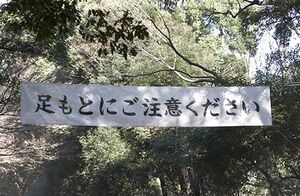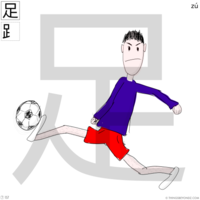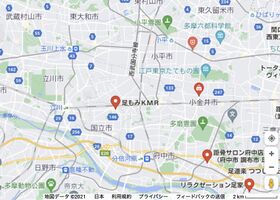⾜
X2F9C ⾜ is Unicode character number 12188, KanjiRadical, Ashi.
⾜ uses 3 bytes: %e2%be%9c ;
226 190 156 in the decimal representation.
X2F9C ⾜ can be pronounced Ashi and may refer to feet(foot) or leg(s).
X2F9C ⾜ is easy to confuse with character
X8DB3 足
that has similar picture, similar pronunciations and similar meanings.
Also, character X2ECA ⻊ (AshiHan) may have similar view.
Confusion
Set of these two characters
X2F9C ⾜,
X8DB3 足
is denoted with term Radical157
(Radical 157, Radica157)
[1].
Characters X2F9C ⾜ and X8DB3 足 may look similar (at Macintosh default font).
Even a native Japanese speaker, watching ⾜, 足,
is unlikely to answer:
Which of them is X2F9C?
Which of them is X8DB3?
In such a case, the correct specification of the character is "X2F9C ⾜ or X8DB3 足".
Term Radical_157 can be used to substitute this long construction.
However, term Radical_157 is difficult to remember, and difficult to pronounce, it character "X2F9C ⾜ or X8DB3 足" appears in some text.
For this case, term Ashi is defined.
There is difficult question, if character AshiHan, id est, X2ECA ⻊ should be included into set Ashi.
Graphics
Af some operational systems (Linux), with the default font, characters X2ECA ⻊, X2F9C ⾜ and X8DB3 足 can be distinguished with naked eye.
At Linux default font, they look this way: ![]()
At Macintosh default, they look this way : ![]()
At your computer, characters X2ECA ⻊, X2F9C ⾜, X8DB3 足 look this way: ⻊,⾜,足
Roughly, character X2F9C ⾜, can be considered as enlarged, fat version of character X2ECA ⻊.
Up to year 2021, the computer support of Japanese characters is underdeveloped: yet, there is no united standard for the default font, that would allow each character to look the same at carious computers, but different from other characters.
While this fault is not fixed, there is sense to use the hexadecimal numbers to specify the characters, or use term Ashi in the case, then any of the characters can be used. Visually, term Ashi seems to be well distinguishable from any other terms used in TORI.
Semantic and phonetic
Character X8DB3 足 seems to be more popular than X2F9C ⾜.
No indication of semantic not phonetic difference for these two characters is found.
Description of X8DB3 足 can be applied also to X2F9C ⾜.
This description is not repeated here.
In addition to feet (foot) and leg(s), character ⾜ may be used as counter for pairs of footwear, and also may have sense of verb: to satisfy, to be sufficient.
Gallery
On the base of descriptions in the cited dictionaries, the search of relevant images had been performed. Sone of the results are shown below.
References
- ↑ https://en.wikipedia.org/wiki/Radical_157 Radical 157 or radical foot (足部) meaning "foot" is one of the 20 Kangxi radicals (214 radicals in total) composed of 7 strokes. In the Kangxi Dictionary, there are 580 characters (out of 49,030) to be found under this radical. 足 is also the 158th indexing component in the Table of Indexing Chinese Character Components predominantly adopted by Simplified Chinese dictionaries published in mainland China. Radical 157 (U+2F9C) .. 足 (U+8DB3) "foot" ..
Keywords
Ashi, Japanese, Kanji, KanjiConfudal, KanjiLiberal, KanjiRadical, Radical 157, X2ECA ⻊, X2F9C ⾜, X8DB3 足,




